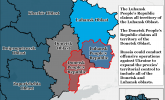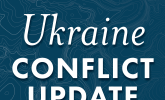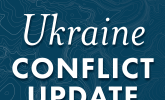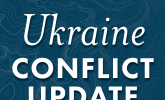Russia-Ukraine Warning Update: Russian Military Operations in Southeastern Ukraine Imminent
February 21, 2022 - ISW Press
Russia recognized the independence of the Donetsk and Luhansk People’s Republics (DNR and LNR) and signed treaties of “friendship, cooperation, and mutual assistance” with them on February 21, 2022. Russian President Vladimir Putin announced his decision in a lengthy speech on the same day. The text of these agreements has not been publicized as of this writing. The Russian Duma will likely vote to authorize the use of Russian military force to occupy the republics, and Russian conventional forces will likely move to do so within the next 24-36 hours. Russian formal recognition of the republics will likely include recognizing all their territorial claims, which extend to the portions of Donetsk and Luhansk Oblasts still under Ukrainian control.








